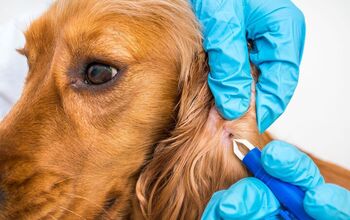Quick Tips for Keeping Your Longhaired Dog Looking His Best

Nothing is more beautiful than a dog with long, flowing coat of silky smooth hair. Unfortunately, keeping a longhaired dog’s coat in prime condition is not always easy. Frequent brushing to keep shedding under control, regular trimming to prevent overgrowth, and routine inspections to prevent matting are just a few of the things you’ll have to do to keep your longhaired dog looking his best.
Basic Grooming Tips for Longhaired Dogs
While it might be tempting to save some money by grooming your dog yourself, grooming a longhaired dog might be trickier than you imagine. Some dogs with long coats need frequent trimming because their coats never stop growing – others only need an occasional trim. In addition to learning how often your dog’s coat needs to be trimmed, you also need to learn how to trim it. For some dogs, the coat grows straight out from the body; for others it falls in waves or follows a middle part down the back. The best way to learn how to groom your dog properly is to have him professionally groomed and to watch what the groomer does.
Related: Why You Should Start Grooming Your Puppy From An Early Age
Even after you’ve learned the basics of how to groom your longhaired dog, you then need to make sure you have the right tools. When it comes to brushing a longhaired dog, your best bet is either a wire-pin brush or a medium bristle brush with widely spaced bristles. If you use a wire-pin brush, make sure the bristles are widely spaced so your dog’s long hair doesn’t get caught in it. If you are using a bristle brush, make sure it isn’t too soft or too stiff – stiff bristles are best for coarse hair, not thin or silky hair. You may also want to invest in a slicker brush to help work through tangles and mats.
In order to keep your longhaired dog’s coat clean, you may need to bathe him more often than you would with other breeds but you don’t want to bathe him too often – about once a month is the most you want to bathe your dog unless he gets very dirty in between. Always use a dog-friendly shampoo when you bathe your dog, as human shampoo can irritate your dog’s skin. Work the shampoo into a lather with some lukewarm water and work it into your dog’s coat before rinsing it thoroughly. After bathing, you’ll probably need to towel your dog off and then use a hair dryer to dry him the rest of the way. Dogs with long coats are more prone to tangling if you let their coats air dry.
How to Deal with Mats Appropriately
In addition to bathing and trimming your dog, you will also need to deal with mats on occasion. As longhaired dogs shed, the fur sometimes gets stuck in the coat that causes small mats to form close to the skin. The area behind the ears, under the legs, and around the anus are particularly sensitive areas for dogs so be extra careful about removing mats from those places.
Related: Preparing Your Pooch For His First Dog Groomer Visit
When you are brushing your dog, use the wire-pin brush or bristle brush to do most of the work, brushing slowly in the direction of hair growth. If you encounter a mat, see if you can break it up gently with your fingers before you try the brush. For stubborn mats you can use a wide-toothed comb to carefully work the mat apart. If you do have to cut out a mat (this should be a last resort), be sure to pinch the hair as close to the dog’s skin as possible before cutting – this will prevent you from accidentally cutting your dog.
Keeping your longhaired dog well-groomed is not just about making sure that he looks good – it will help him feel good as well. A poorly maintained coat can lead to skin irritation and a matted coat can actually become painful for your dog. If you keep up with regular brushing, grooming, and mat control, however, your longhaired dog will be letting his fur blow free with wild abandon.

Kate Barrington is the loving owner of two cats (Bagel and Munchkin) and a noisy herd of guinea pigs. Having grown up with golden retrievers, Kate has a great deal of experience with dogs but labels herself a lover of all pets. Having received a Bachelor's degree in English, Kate has combined her love for pets and her passion for writing to create her own freelance writing business, specializing in the pet niche.
More by Kate Barrington























